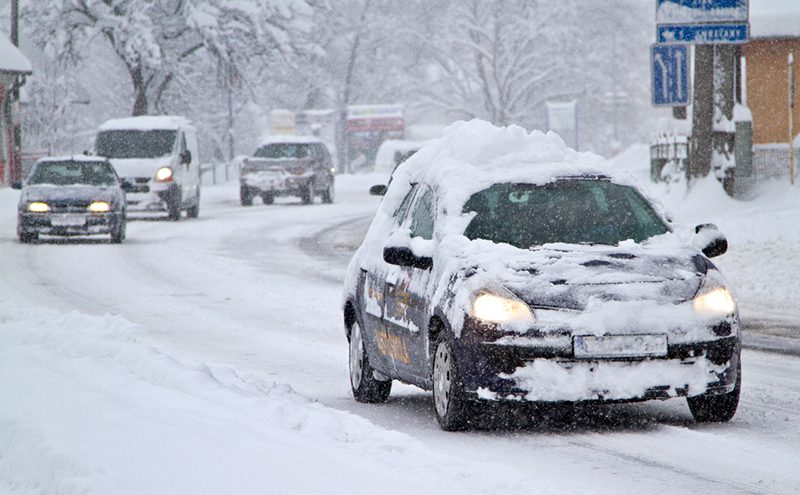
TRL, a group specialising in innovation in transport and mobility, says it is reviewing new ways local authorities can prepare for extreme weather and advanced winter maintenance strategies in the future.
Experts around the globe have warned that the world is facing unprecedented challenges in the face of climate change. Future weather fronts will see the UK experience much wetter and warmer winters than ever before and a potential increase in unpredictable extreme weather events such as 2017’s ‘The Beast from the East’.
The impact of climate change on the modern world will likely have profound effects on infrastructure requirements and how authorities maintain their road networks. Considering the irregular nature of extreme winter weather, how will winter maintenance be affected and how can authorities better plan and prepare for the changes ahead?
TRL’s winter maintenance expert, Matthew Evans, has undertaken an extensive amount of research around preparation and planning for winter events, from which he believes that authorities need to take a closer look at how they plan their maintenance programmes to efficiently overcome the challenges winter produces.
“The world’s climate is changing rapidly, meaning authorities will face increased challenges to combat weather events and manage their networks effectively. If the UK begins to see warmer winters, a bigger issue may present itself if authorities become less prepared for extreme circumstances as a result.
“Looking ahead, innovative new technologies coming on to the market could provide the UK’s road networks with a variety of ways to combat the winter period. In the first instance, authorities must gain a firm understanding of their own networks and make use of effective strategies to monitor conditions.
“Technology is improving all the time and making use of route-based forecasting, dynamic route optimisation and the latest sensors to monitor conditions could potentially provide significant savings in winter maintenance budgets for the typical winter in the UK,” explained Evans.
Experts from the Transport Research Laboratory (TRL) are working closely with the National Winter Service Research Group (NWSRG) to develop a new framework of research to provide road authorities with the means to better plan and prepare winter maintenance programmes.
Residual salt assessment
The top research priority often cited by members of the NWSRG and the wider winter maintenance community is some means of accurately assessing the levels of residual salt on the network. Residual salt is the background level of salt on the road surface which can often be a significant amount, especially during dry and cold periods where salt is spread every day without rainfall. Providing sensors or other technology that can detect this salt could bring road authorities significant savings.
Current sensors and other monitoring techniques do not provide reliable measurements of residual salt under all conditions and in many cases, practitioners do not have the confidence to take levels of residual salt into account to inform decisions around when to undertake an operation or reduce spread rates.
When combating cold weather, there is often scope for authorities not to treat all their networks on cold nights. However, many road authorities carry out treatments over all their routes as they don’t want to take the risk – with better information provided by new technologies such as sensors and route-based forecasting, this might change.
Authorities would be able to effectively monitor conditions in real time and provide themselves with early warnings to any issues allowing for a more dynamic approach to the routes they maintain.
UK authorities typically deal with marginal winter temperatures at around zero degrees, often creating dilemmas around whether they really need to treat the network that night. This is potentially where authorities could make significant savings: through fewer treatments or greater confidence to stand down crews. This is where current research may have the most immediate benefit. For example:
- Improvements in weather forecasting – using domain or route-based forecasting to make treatment decisions for smaller portions of the network. This gives scope to only treat certain routes rather than having to treat the entire network.
- Dynamic route optimisation – techniques that use route-based forecasting to identify efficient treatment routes in real time based on weather conditions.
- New sensors – that can be located beside or within the road and even on vehicles. These will allow authorities to monitor important factors such as road temperature, road wetness, presence of snow or ice and the amount of salt already on the road before further treatment.
TRL is the principal contractor to the NWSRG and has assisted in the development of the latest Practical Guidance for Winter Service. This guidance is helping authorities to implement the ‘Well-managed highway infrastructure’ Code of Practice.
The Code requires authorities to implement a risk-based approach, with the flexibility to decide local levels of service through risk-based assessment, rather than a reliance on specific guidance and recommendations as in previous versions of the Code.
The NWSRG guidance provides the information to assist authorities in reviewing their current policy and plans as well as how to implement new technologies and methods of working.
You can find the latest guidance from the NWSRG here: http://www.nwsrg.org/publications/guidance






